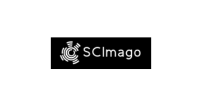SAFETY OF UTERINE LAVAGE WITH OZONATED SALINE IN MARES
DOI:
https://doi.org/10.5380/avs.v1i1.81197Keywords:
endometritis, equine, fertility, ozone.Abstract
This study aimed to assess the safety of uterine lavage using ozonated saline in mares. Each liter of saline (NaCl 0.9%) was ozonated at 50 µg of ozone per mL for 7 min using a medical ozone generator. Then, uterine lavage was performed during estrus or 4h post-breeding and each liter of saline remained inside the uterus for 10 min before being recovered. In experiment 1, two cycles of six mares were used in a crossover design. Lavage was performed with ozonated (Treated) or non-ozonated (Control) saline 4h after the infusion of dead sperm, and cytology samples and biopsies were collected 6 and 24h later. Experiment 2, endometrial biopsies were collected before lavage (T0) and at 15 (T15), 30 (T30), and 60 (T60) days post-treatment with ozonated (n=11) or non-ozonated (n=3) saline. In experiment 3 (n=10), the pregnancy outcome was evaluated subsequent to lavage with ozonated saline 4h after insemination. In Experiment 1, there were no difference at 6h post-breeding in PMNs count on endometrial cytology between treatment and control groups (P>0.05). However, PMNs tended (P=0.09) to be superior in the experimental treatment compared to the control at 24h post-breeding. In addition, the number of PMNs tended to be lower in the control cycle at 6 h (P=0.06) and 24 h (P=0.08) in endometrial biopsies. In Experiment 2, the endometrial architecture, the numbers of lymphocytes and PMN were not affected by the treatment (P>0.05). In Experiment 3, nine out of 10 mares were confirmed to be pregnant after treatment, and there was not pregnancy loss up to 60 days. In conclusion, uterine lavage with ozonante saline solution may cause a mild endometrial inflammation, however, doesn’t harm the endometrium or impact pregnancy outcomes in healthy mares.
Downloads
Published
How to Cite
Issue
Section
License
Authors that wish to publish in AVS agree with the following conditions:
- To keep copyright of the article and allow the AVS to publish the first time. The article will be licensed by Creative Commons - Atribuição 4.0 Internacional allowing the sharing of their work.
- Authors may distribute their work by other channel of distribution (ex.: local or public repository).
- Authors have the permission to publish their work online, using different channels (similar to above), even before the final editorial process.













